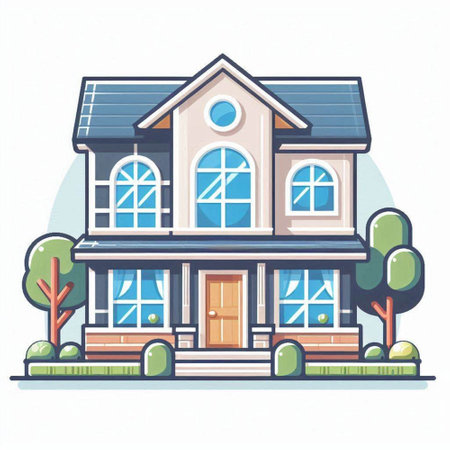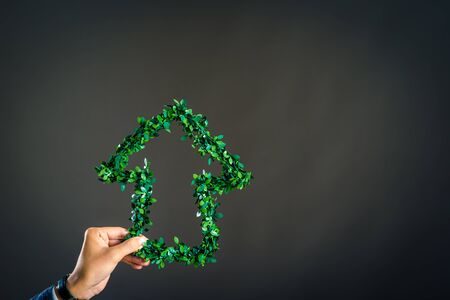Understanding the Value of Energy Efficiency
When planning a new home addition, energy efficiency should be at the top of your priority list. Integrating energy-efficient solutions isn’t just about reducing monthly utility bills—it’s a strategic investment that pays off over time. By focusing on proper insulation, high-performance windows, and advanced HVAC systems from the outset, you’re setting your home up for long-term savings and increased property value. Beyond financial benefits, energy-efficient additions also deliver year-round comfort. Improved temperature regulation means fewer drafts in winter and less overheating in summer, keeping every room in your new space inviting. With rising energy costs and growing environmental awareness in the U.S., homeowners who prioritize these upgrades are ahead of the curve, enjoying better living conditions while maximizing their return on investment.
2. Selecting the Right Insulation Materials
Choosing the right insulation is a critical step for energy-efficient home additions in the U.S. market. Homeowners must balance performance, cost, and climate zone requirements to maximize return on investment. Let’s break down the most popular insulation materials: spray foam, fiberglass, and cellulose.
Comparing Popular Insulation Options
| Type | R-Value (per inch) | Best Climate Zones | Cost Effectiveness | Other Pros/Cons |
|---|---|---|---|---|
| Spray Foam (Closed Cell) | 6–7 | All zones (especially humid or extreme climates) | High upfront, strong long-term ROI | Superior air sealing; moisture barrier; higher installation cost |
| Fiberglass Batt | 2.9–3.8 | Mild to moderate climates (Zones 3–5) | Low upfront, moderate ROI | DIY-friendly; may leave gaps if not installed properly; vulnerable to moisture |
| Cellulose (Blown-In) | 3.2–3.8 | Colder climates (Zones 4–7) | Moderate upfront, solid ROI | Recycled material; good air sealing when dense-packed; can settle over time |
Understanding R-Values and Climate Zones
The U.S. Department of Energy divides the country into climate zones ranging from hot and humid (Zone 1) to very cold (Zone 7). The higher the R-value, the better the material insulates—critical for energy savings in both hot summers and cold winters. For example, spray foam’s high R-value makes it ideal for harsh climates or where space is limited, while fiberglass remains popular in many suburban homes due to its affordability.
Maximizing Investment with Smart Selection
Your insulation choice directly impacts your addition’s comfort and ongoing utility costs. While spray foam delivers superior performance and air sealing, its initial expense pays off through lower energy bills over time—a true “pay now, save later” scenario. Fiberglass and cellulose are budget-friendly up front but may require more frequent upgrades or supplemental air sealing.
Pro Tip for U.S. Homeowners:
If you’re building in regions with temperature extremes or high humidity, prioritize spray foam or dense-packed cellulose for their enhanced air sealing and moisture control—these choices deliver noticeable long-term returns on your energy investment.

3. Air Sealing and Weatherproofing Tactics
When adding new space to your home, air sealing should be a top priority if you want maximum energy efficiency and lower utility bills. Even high-quality insulation can’t perform at its best if outside air sneaks in through cracks, gaps, or poorly sealed joints. Air leaks not only let precious heated or cooled air escape, but also invite moisture, allergens, and pollutants into your living space. That means higher HVAC costs and potential long-term damage like mold or rot. The good news? Proven air sealing tactics can give you serious ROI by keeping your new addition comfortable year-round.
Start With the Building Envelope
The “envelope” of your home—the walls, roof, windows, and foundation—should be as airtight as possible. Use expanding spray foam or caulk to seal joints where framing meets foundation, around window and door frames, and any place utilities penetrate exterior walls. Don’t forget about recessed lights, attic hatches, and electrical boxes—these small details often create major drafts if ignored.
Weatherstripping for Doors and Windows
Install high-performance weatherstripping around all doors and operable windows in your new addition. Choose materials designed for your climate (silicone or EPDM rubber for extreme temps) and make sure they compress fully when closed. Proper weatherstripping is an affordable upgrade that pays off quickly by reducing both heating and cooling losses.
Don’t Overlook Attic and Crawlspace Access
Air movement between living areas and attics or crawlspaces is a hidden energy drain. Seal attic access panels with gaskets or weatherstripped covers, and insulate them to the same R-value as surrounding surfaces. For crawlspaces, use rigid foam board insulation combined with vapor barriers to stop drafts from below.
Professional Testing for Maximum Results
If you’re aiming for top-tier performance, consider a blower door test after construction wraps up. Many U.S. homeowners invest in this diagnostic service to pinpoint remaining leaks before moving in furniture or finishing drywall. It’s a smart move—fixing these issues now locks in savings for years ahead.
By focusing on practical air sealing strategies during the build phase of your new home addition, you’ll enjoy lower energy bills, fewer comfort complaints, and a healthier indoor environment right from day one. That’s an investment that keeps paying dividends season after season.
4. Smart HVAC Choices for Additions
When planning a new home addition, your HVAC decisions are critical for both comfort and long-term cost savings. Modern, energy-efficient heating and cooling systems not only deliver reliable climate control but also translate into real financial returns over time. Let’s break down how smart HVAC selections—such as high-efficiency units, zoning solutions, and properly designed ductwork—can elevate your addition’s performance and slash monthly utility bills.
High-Efficiency HVAC Systems: The Financial Upside
Opting for ENERGY STAR®-rated or variable-speed HVAC units can significantly reduce energy consumption in your new space. These systems adjust output based on demand, preventing unnecessary energy waste compared to traditional single-stage units. The upfront investment may be higher, but the monthly savings quickly stack up, especially as energy prices continue to rise.
| HVAC Type | Initial Cost (Est.) | Annual Energy Savings | Estimated Payback Period |
|---|---|---|---|
| Standard Single-Stage | $3,000–$5,000 | Baseline | N/A |
| ENERGY STAR® Rated | $4,000–$6,500 | 15–20% | 3–5 years |
| Variable-Speed Heat Pump | $5,500–$8,500 | 20–30% | 2–4 years |
Zoning Systems: Customized Comfort Where It Counts
Zoning divides your home into separate climate areas, each with its own thermostat. This means you can keep your new addition cool during hot afternoons without blasting AC throughout the whole house—or heat just the rooms in use on chilly mornings. Zoning is a practical way to fine-tune comfort while directly lowering wasted energy spend.
Zoning vs. Traditional HVAC: What’s the Difference?
| System Type | Main Benefit | Energy Efficiency Impact |
|---|---|---|
| Traditional (Single Zone) | Simplicity; lower upfront cost | Inefficient for additions; often overcools/heats unused spaces |
| Zoned System | Personalized comfort per area; flexible scheduling | Saves 10–30% on energy bills for multi-use homes/additions |
Ductwork Design: Don’t Let Poor Planning Drain Your ROI
If your new addition relies on ducted air delivery, poorly designed ducts can sabotage even the best equipment by causing leaks and uneven airflow. Work with an HVAC pro who understands Manual D calculations to size ducts correctly and eliminate hot/cold spots. Properly sealed and insulated ducts ensure every dollar you invest in efficiency delivers maximum results.
Your Bottom Line: Invest Upfront, Save Long Term
The right combination of high-efficiency HVAC equipment, smart zoning strategies, and optimized ductwork ensures your new home addition remains comfortable year-round—without draining your wallet. Think of these upgrades as investments: a well-designed system will pay for itself in reduced utility bills and increased property value within just a few years.
5. Maximizing Daylighting and Passive Heating/Cooling
When planning a new home addition, maximizing daylighting and leveraging passive heating and cooling strategies can deliver significant energy savings while creating a comfortable, inviting space. By incorporating smart design elements such as strategic window placement, homeowners can flood living areas with natural light, reducing the need for artificial lighting during the day. South-facing windows are particularly effective in capturing sunlight in winter months, helping to warm your interior spaces naturally. To avoid excessive heat gain in summer, consider installing overhangs, awnings, or planting deciduous trees that provide seasonal shading.
It’s also wise to use high-performance windows with low-emissivity (Low-E) coatings and insulated frames to minimize unwanted heat transfer. Skylights and clerestory windows are excellent options for introducing daylight deeper into your home without compromising privacy. Don’t forget about interior finishes—light-colored walls and reflective surfaces can help distribute sunlight more evenly throughout your addition.
On the passive cooling side, cross-ventilation is key. Design your layout so that operable windows on opposite walls allow fresh air to flow through the space, flushing out hot air and maintaining indoor comfort with minimal reliance on HVAC systems. Ceiling fans and thermal mass materials like concrete or tile floors can further enhance these passive effects by storing coolness overnight and releasing it during the day.
These strategies not only cut down on utility bills but also boost your home’s resale value by showcasing a modern, sustainable approach to comfort and design. With upfront planning and thoughtful execution, you’ll enjoy an energy-efficient addition that pays dividends season after season.
6. Financing and Incentives for Energy Improvements
Investing in energy efficiency and insulation for your new home addition can seem expensive up front, but smart homeowners know there are powerful financial incentives to help offset these costs. Understanding and leveraging federal, state, and local programs can significantly improve your return on investment while making your home more comfortable and efficient.
Federal Incentives: The Inflation Reduction Act & Beyond
The U.S. federal government has rolled out substantial tax credits and rebates under the Inflation Reduction Act (IRA). For new home additions, you can claim a tax credit of up to 30% of the cost for qualifying insulation materials, high-efficiency HVAC systems, and energy-efficient windows or doors—up to annual limits. Look specifically for the Energy Efficient Home Improvement Credit (IRS Form 5695). Additionally, the Department of Energy offers various rebate programs for upgrades such as heat pumps and advanced insulation when you meet certain energy savings thresholds.
State-Level Programs: Tailored to Your Location
Many states supplement federal programs with their own rebates and low-interest financing options. For example, California’s TECH Clean California program provides thousands in rebates for high-performance heat pumps, while New York’s NYSERDA offers cash incentives for advanced air sealing and insulation. These programs often stack with federal credits, multiplying your savings.
Where to Find State Incentives
The Database of State Incentives for Renewables & Efficiency (DSIRE) is your go-to resource for up-to-date information on what’s available in your area. Check it before starting your project so you can plan upgrades that qualify.
Local Utility Rebates: Don’t Leave Money on the Table
Local utilities across the country frequently offer rebates for energy-saving improvements—from insulation upgrades to smart thermostats. Some even provide free or discounted home energy audits, which can help you identify exactly where your new addition will benefit most from better insulation or higher-efficiency equipment.
Example: PACE Financing
If upfront cash is a concern, look into Property Assessed Clean Energy (PACE) financing. This program allows homeowners in participating areas to finance energy improvements through property tax assessments, spreading payments over many years and keeping monthly costs manageable.
Maximizing Your ROI: Stack Those Savings
By combining federal tax credits, state incentives, utility rebates, and innovative financing like PACE, you can dramatically reduce the net cost of building an energy-efficient home addition. Not only do these programs cushion your initial investment—they set you up for long-term savings on utility bills and may increase your property value when it’s time to sell. Before breaking ground, consult with a local energy advisor or contractor familiar with incentive stacking to ensure you capture every available dollar for your project.

